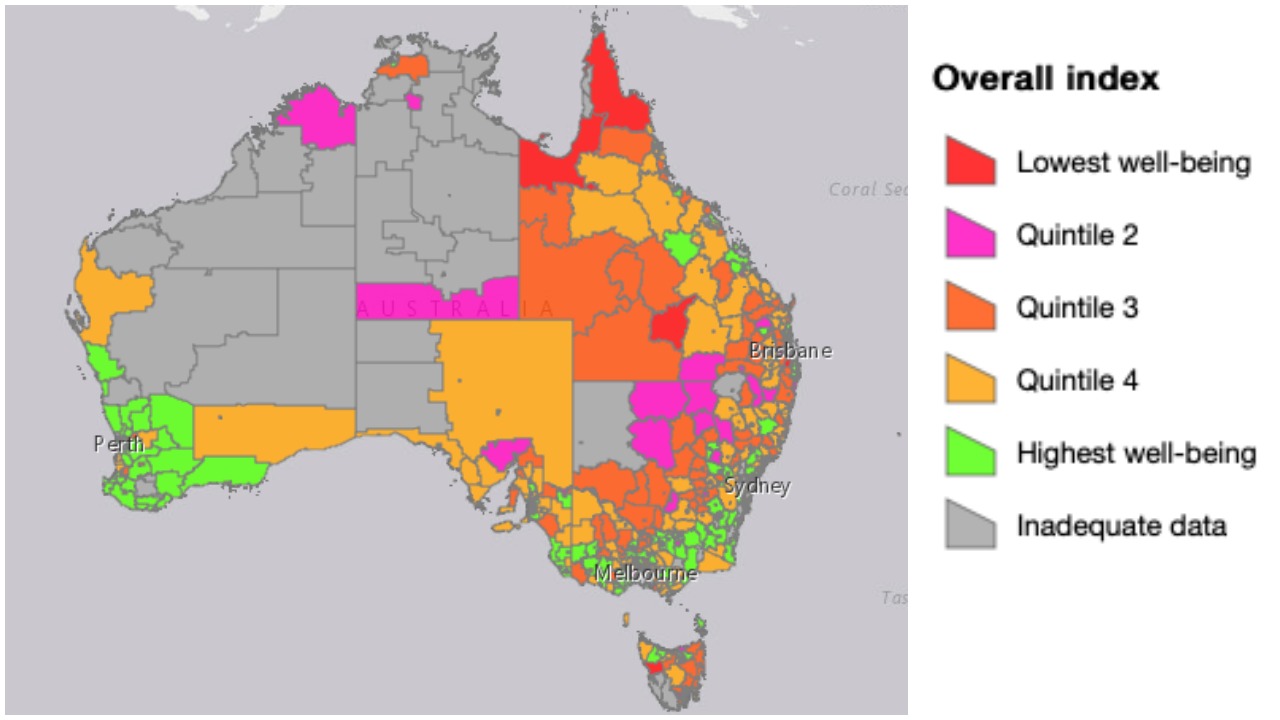
A new report has revealed the areas of Australia where seniors experience the highest and lowest levels of wellbeing, with factors such as volunteering, rent, lack of superannuation and access to aged care services bearing an impact on the results.
The findings were published in the Index of Wellbeing for Older Australians (IOWA), which was commissioned by advocacy group The Benevolent Society and put together by The National Centre for Social and Economic Modelling (NATSEM), using data from the 2016 Census, the ABS Household Expenditure Survey and the Australian Institute of Health and Welfare.
“Where people live affects their wellbeing at all ages,” the report reads. “But location has particular importance for older people as they tend to be less mobile than younger people, especially in the later years when health problems can become more common and they may be more dependent on public or community transport to access services.”
Taking into account how older Australians are faring across five areas of life, including participation, education, health, housing and resources and wealth, the report revealed that the areas where older people enjoy the highest levels of wellbeing also have higher proportions of over-65s who engage in volunteering and possess higher levels of education.
Whereas the areas recording the lowest levels of wellbeing see seniors requiring more assistance with their day-to-day activities, as well as larger numbers of renters, those with little or no superannuation and an increased need for aged care services.

Read more: ‘Too many older Aussies feel ignored’: New report raises concerns of over-50s.
A large proportion of southern-Western Australia was found to be home to over-65s who boasted a high quality of life. Those results were in stark contrast to the welfare of older Aussies who live in far-north Queensland though where several regions close to the border of the Northern Territory reported the lowest levels of wellbeing.
Interestingly though the report revealed that both the lowest and highest levels of wellbeing tend to be mainly in urban areas, highlighting the diversity of those living in Australia’s biggest cities.
A quarter of those who said they were experiencing the highest level of wellbeing reside in capital cities, while just 12 per cent of people living outside of capital cities feel the same.
However, it’s not all good news for those living in capital cities, such as Sydney, Melbourne and Brisbane, as 20 per cent of older residents in capital cities are experiencing the lowest level of wellbeing, as well as 21 per cent of over-65s in regional areas.
“As we get older, we all want a good quality of life, living independently in our own homes, but we need services and support to thrive whilst doing so,” said Dr Kirsty Nowlan from The Benevolent Society. “Governments have no excuse for not providing this support purely because they are rationing services that should be provided.”
Nowlan added: “IWOA provides insights into many aspects of wellbeing for older people. People are social, and we remain social as we get older. As this report shows, participating in our communities through volunteering or maintaining employment – no matter what your age – enriches our wellbeing.”
Read more: Research reveals the biggest financial concerns of older Australians.
The report is designed to inform policy and Nowlan added that the data could assist the government in better targeting their services to ensure “people in the same communities are not left behind”.
Professor Robert Tanton of NATSEM said: “With Governments making more use of detailed place based data in their policy making and service planning, the IWOA provides an aggregate picture of wellbeing for older people which can quickly identify areas for further analysis using more detailed spatial datasets available to Government.”
The Benevolent Society has also called on the government to address a number of issues surrounding senior Australians and their wellbeing, including ageism in the workplace, inadequate social housing and housing policy, as well as increasing funding to benefit the high number of people currently waiting to be assigned their Home Care Packages.